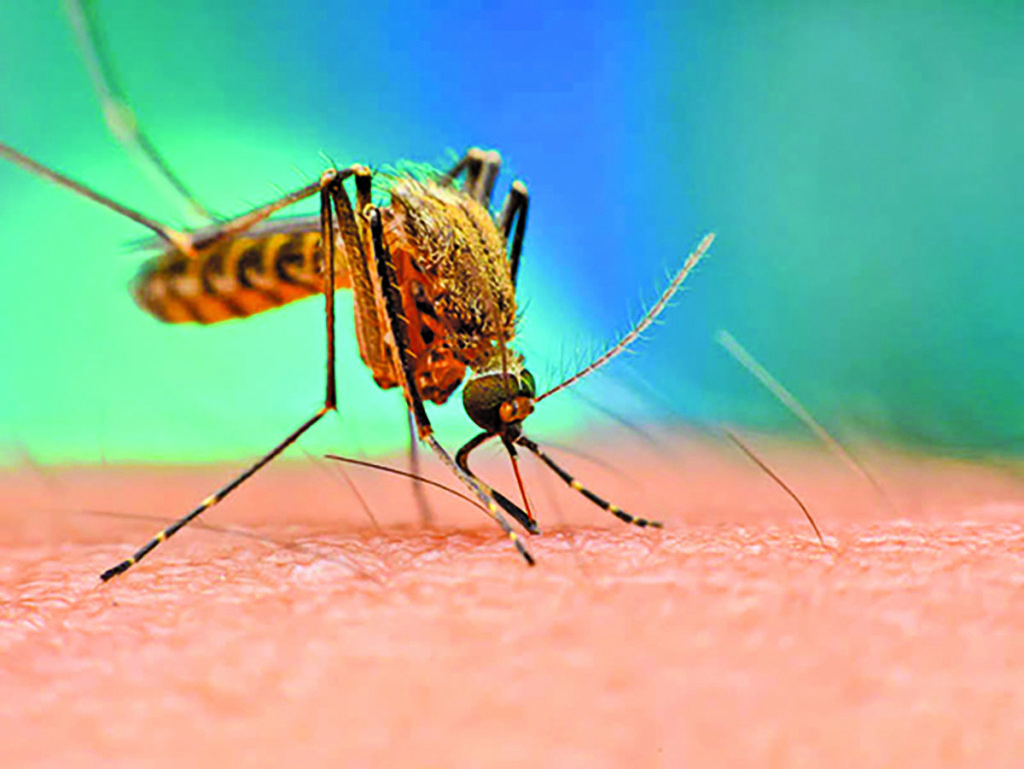Home News Health Ministry monitoring flooded areas for mosquito-borne illnesses
…dengue surfaces in Region 6
 The Health Ministry has been on the lookout for possible cases of mosquito-borne illnesses as flooding continues to affect all regions in Guyana.
The Health Ministry has been on the lookout for possible cases of mosquito-borne illnesses as flooding continues to affect all regions in Guyana.
It has been a month since persistent floodwaters have been devastating the country, linked to torrential rainfall which had a ripple effect on drainage systems.
On Monday, Health Minister Dr Frank Anthony shared that some mosquito-borne diseases were reported in the Middle and Upper Mazaruni area, Region Seven (Cuyuni-Mazaruni). In Region Six (East Berbice-Corentyne), three cases of dengue were also detected.
“We have been looking at mosquito-borne diseases. We’ve put several measures in place. Our team from the Ministry of Health has been on the ground in most of these flooded areas, spoken to residents, did outreach clinics in most of these areas and gave out medications and so forth. We continue to do that.”
Anthony added, “We have noticed in one or two areas where there have been mosquito-borne diseases. Like in the Upper and Middle Mazaruni, we have had some cases there, more than usual. We had sent in a team there last week and we’ve also distributed insecticide-impregnated bed nets. We have also seen a couple cases of dengue in Region Six and Black Bush Polder. We’ve had three cases and so a medical team has been monitoring what’s going on there.”
Over in Black Bush Polder, residents were provided with 300 insecticide-infused nets. The Civil Defence Commission is also distributing medical packages in all response areas, which contains several items that persons can use to keep their health intact until the floodwaters are under control.
“We have also partnered with the CDC and we’ve done some special kits. There is a medical package that CDC is now giving out that would have some basic things like oral rehydration salts, bleach, ointments. These are all over-the-counter medications that you can use. As they go out to distribute hampers to flooded areas, inclusive in that hamper is a medical package that can be used and there’s also instructions. We’ve done that across the country,” Dr Anthony shared.
Mosquito-borne illnesses usually surface where stagnant water is present, creating a breeding ground for these insects.
Dengue is a flu-like illness which affects infants, young children and adults. The symptoms usually begin four to 10 days after infection and includes high fever, headache, vomiting, muscle and joint pains, and a characteristic skin rash.
CARPHA lists dengue as a global health problem and there is no specific treatment for the disease. Adding to that, the Aedes aegypti mosquito vector, which spreads dengue, is present in all Caribbean territories.
Since the reports of flooding started, over 36,000 persons have been displaced while over 200 were in shelters. Guyana has been classified as a Level 2 Disaster under the Caribbean Disaster Emergency Management Agency’s (CDEMA) mechanism, which indicates that the national capacity to respond is not overwhelmed but external assistance is required in the form of technical assistance, specialised equipment, support personnel and information sharing in order to respond and recover from the event.
Despite Guyana’s situation being classified as Level 2, the impact of the flood in the regions vary, with Regions One, Three, Four, Eight and Nine being at Level 2, given national capacity to manage the impact, while Regions Two, Five, Seven and 10 are classified as Level 3, based on the magnitude of the flood. (G12)
 The Health Ministry has been on the lookout for possible cases of mosquito-borne illnesses as flooding continues to affect all regions in Guyana.
The Health Ministry has been on the lookout for possible cases of mosquito-borne illnesses as flooding continues to affect all regions in Guyana.